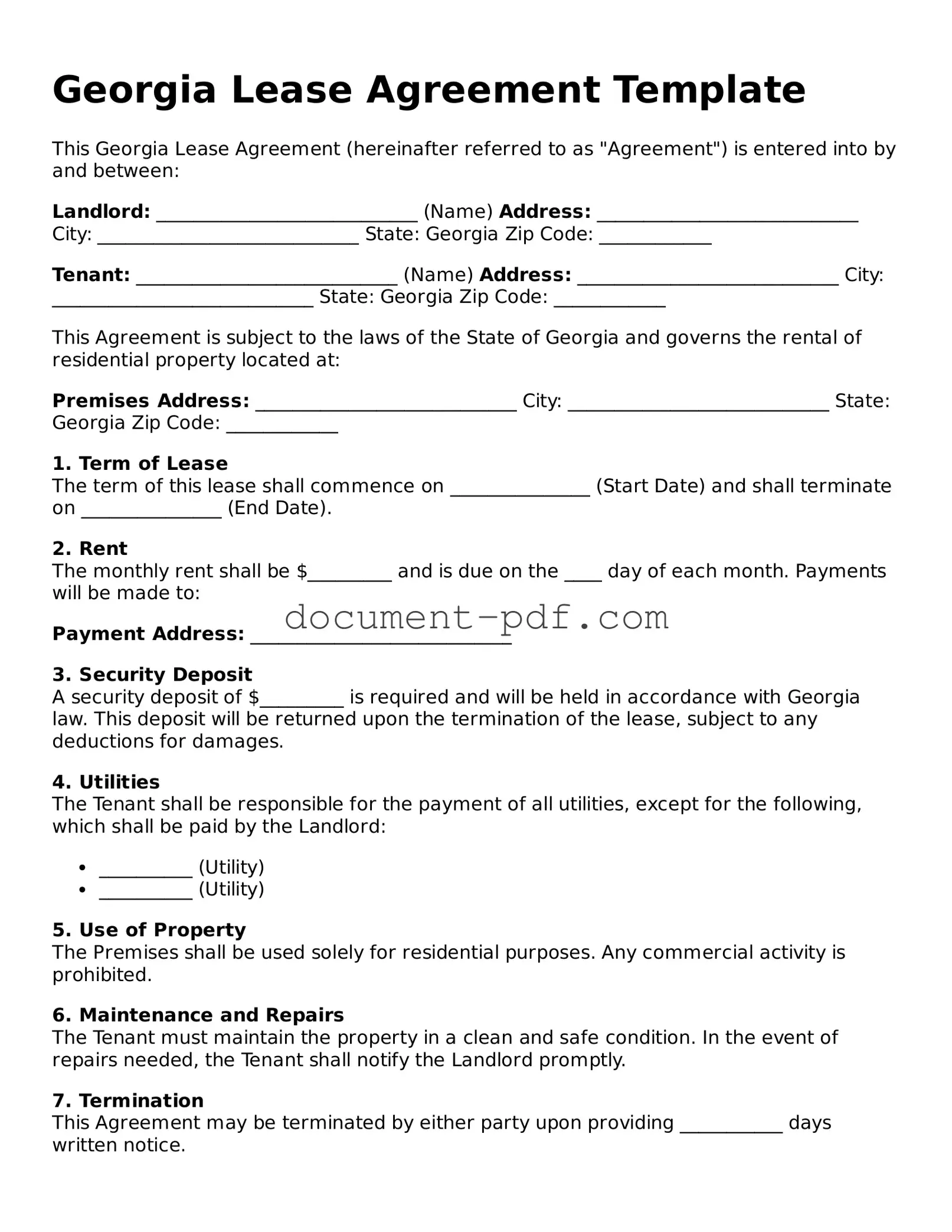Georgia Lease Agreement Template
This Georgia Lease Agreement (hereinafter referred to as "Agreement") is entered into by and between:
Landlord: ____________________________ (Name)
Address: ____________________________
City: ____________________________
State: Georgia
Zip Code: ____________
Tenant: ____________________________ (Name)
Address: ____________________________
City: ____________________________
State: Georgia
Zip Code: ____________
This Agreement is subject to the laws of the State of Georgia and governs the rental of residential property located at:
Premises Address: ____________________________
City: ____________________________
State: Georgia
Zip Code: ____________
1. Term of Lease
The term of this lease shall commence on _______________ (Start Date) and shall terminate on _______________ (End Date).
2. Rent
The monthly rent shall be $_________ and is due on the ____ day of each month. Payments will be made to:
Payment Address: ____________________________
3. Security Deposit
A security deposit of $_________ is required and will be held in accordance with Georgia law. This deposit will be returned upon the termination of the lease, subject to any deductions for damages.
4. Utilities
The Tenant shall be responsible for the payment of all utilities, except for the following, which shall be paid by the Landlord:
- __________ (Utility)
- __________ (Utility)
5. Use of Property
The Premises shall be used solely for residential purposes. Any commercial activity is prohibited.
6. Maintenance and Repairs
The Tenant must maintain the property in a clean and safe condition. In the event of repairs needed, the Tenant shall notify the Landlord promptly.
7. Termination
This Agreement may be terminated by either party upon providing ___________ days written notice.
8. Governing Law
This Agreement shall be governed by the laws of the State of Georgia.
Both parties acknowledge they have read and understood the terms of this lease agreement and voluntarily accept its provisions.
Landlord Signature: ________________________ Date: ___________
Tenant Signature: ________________________ Date: ___________
